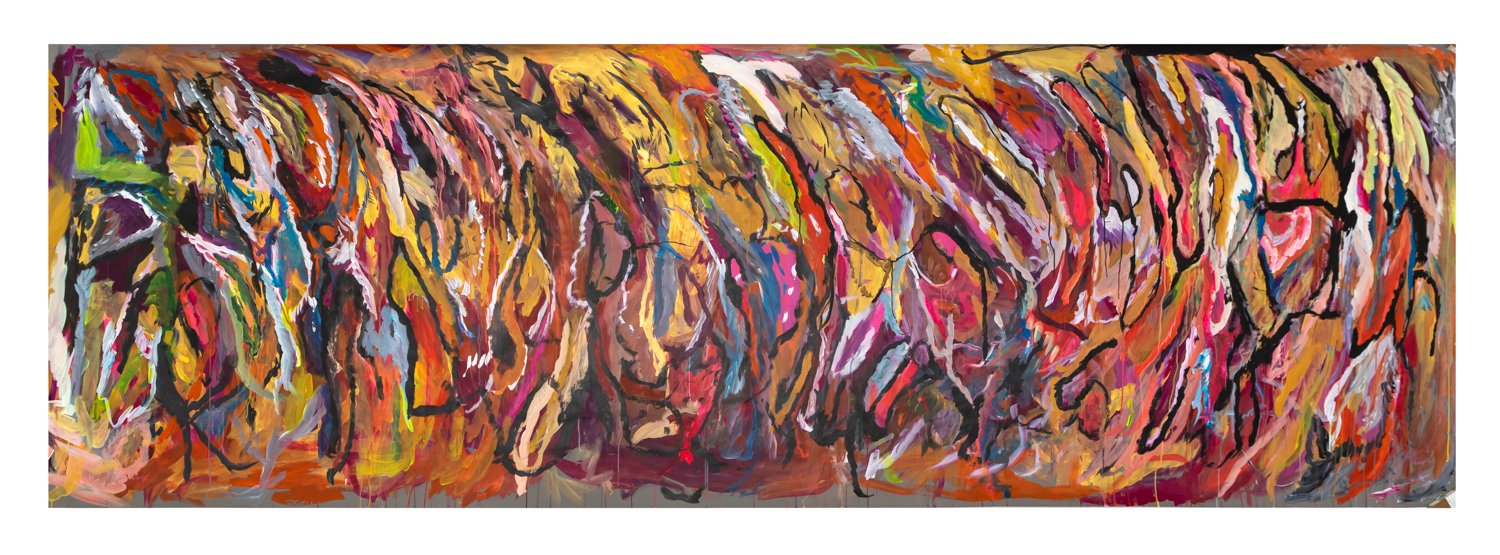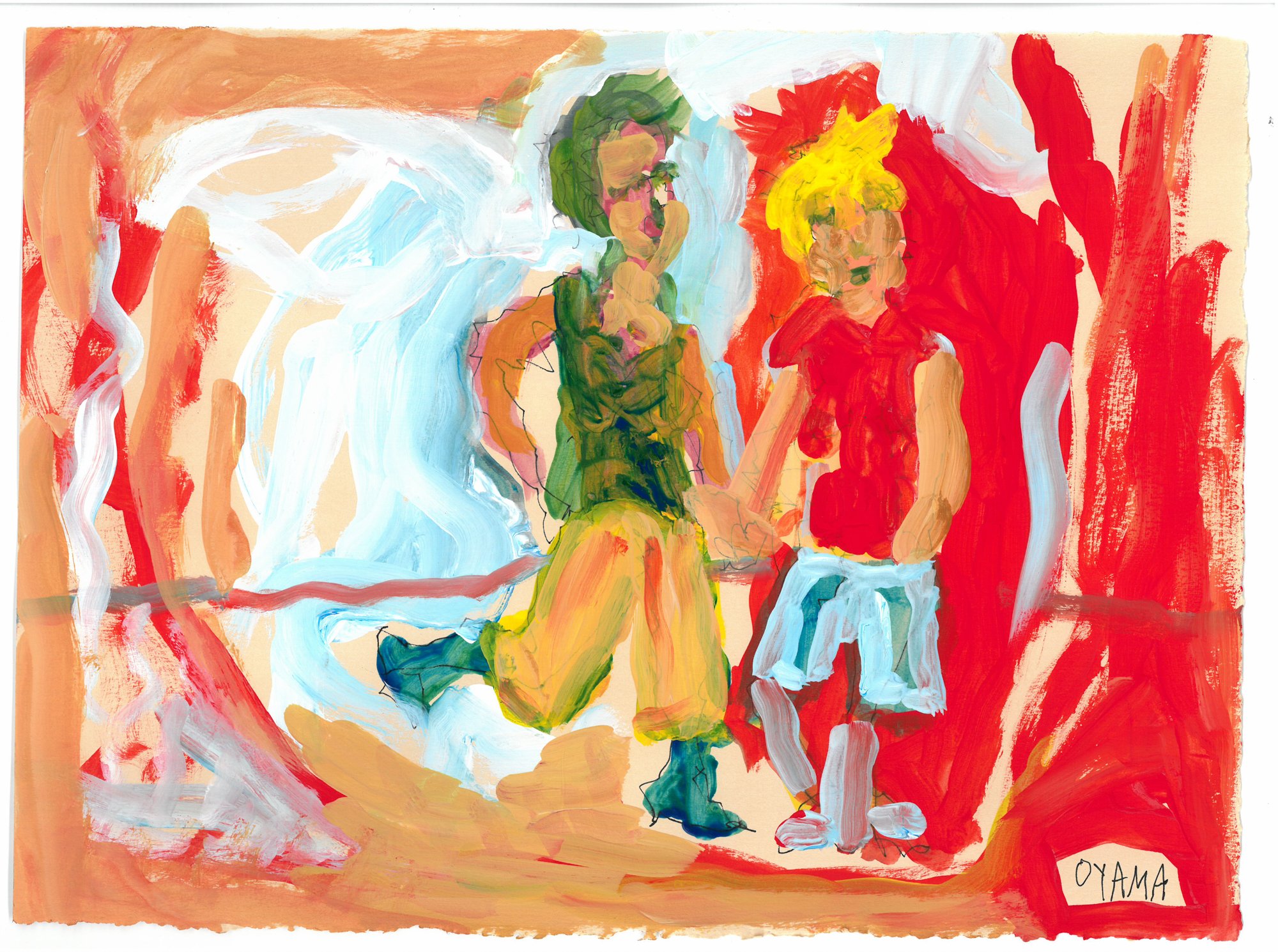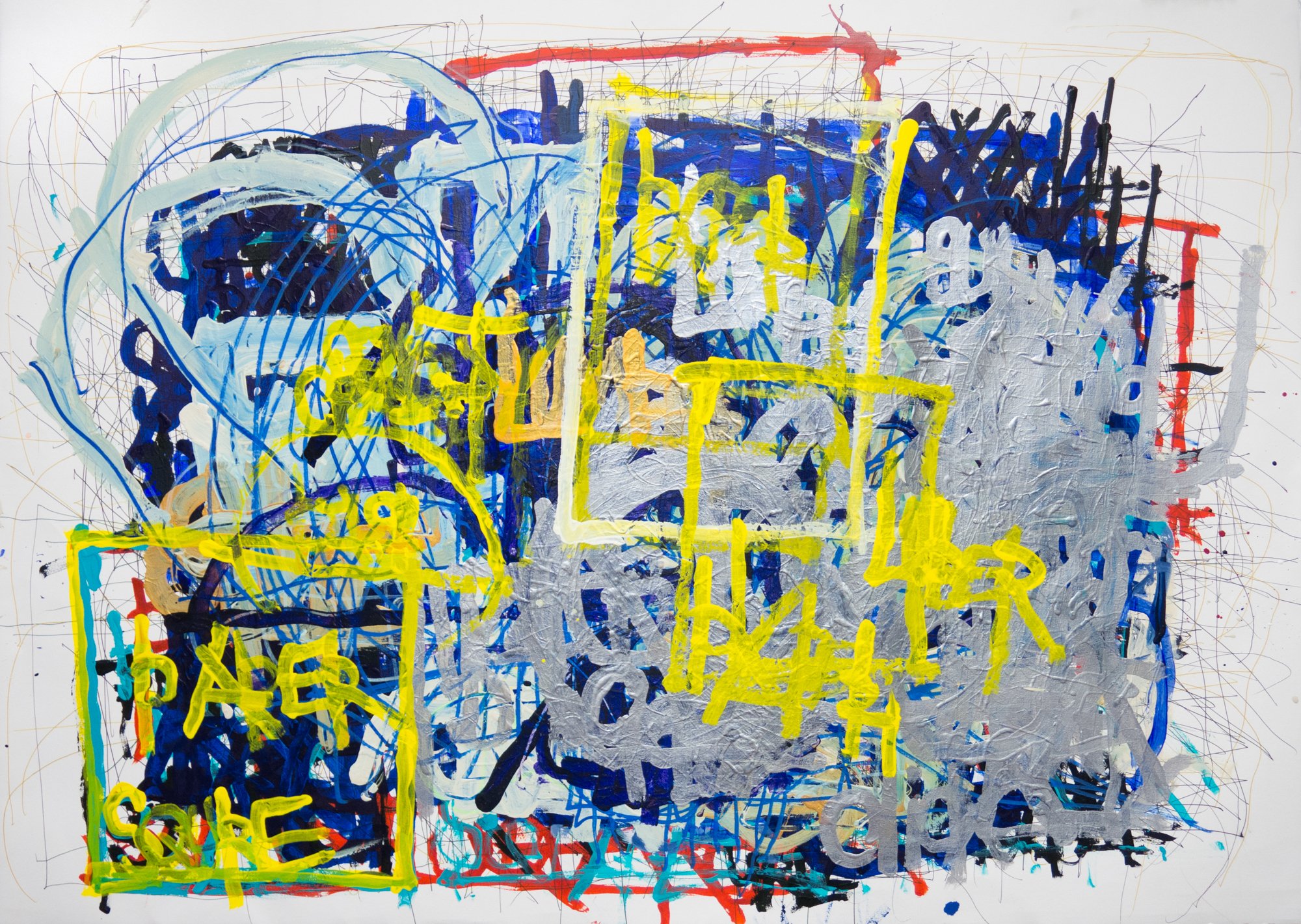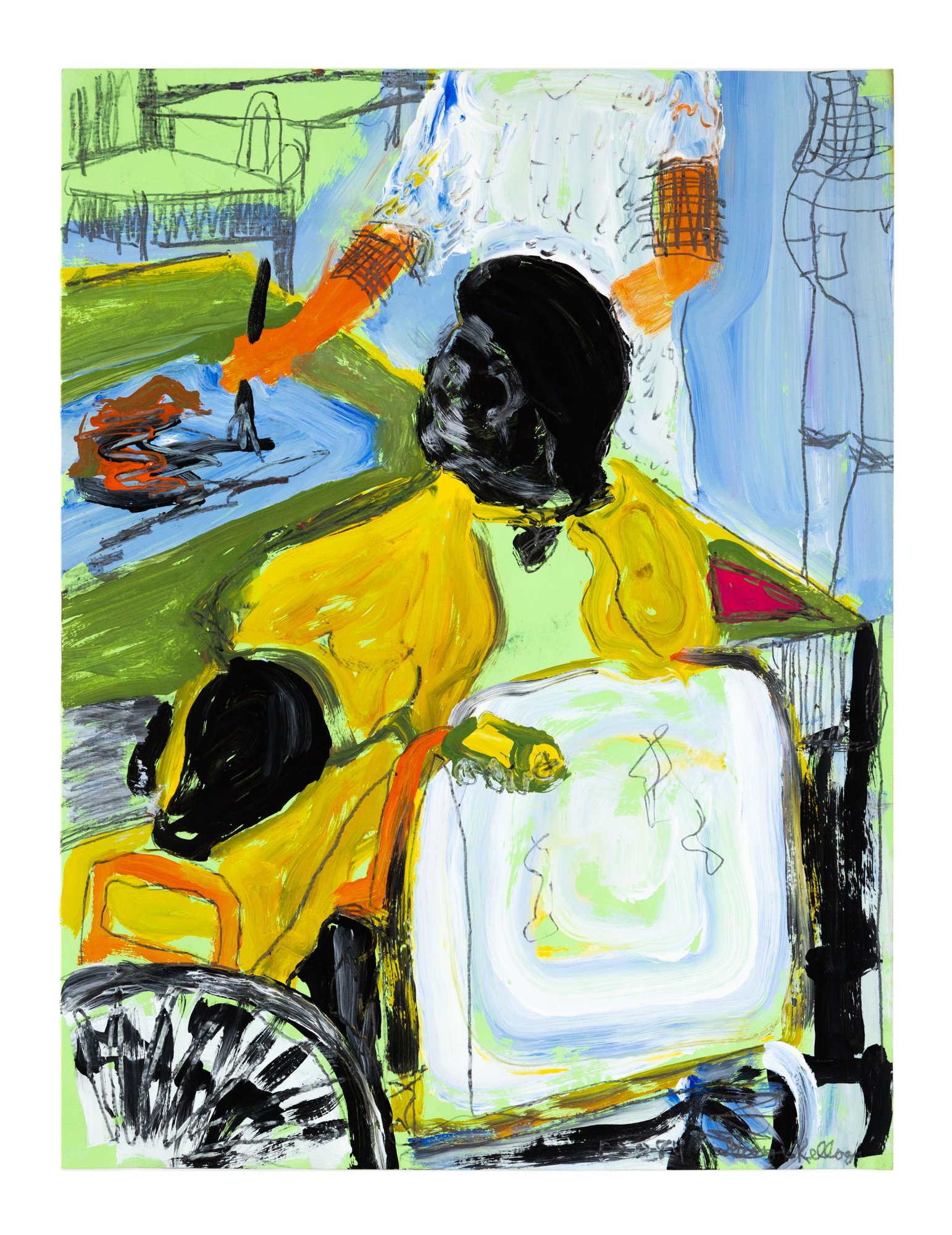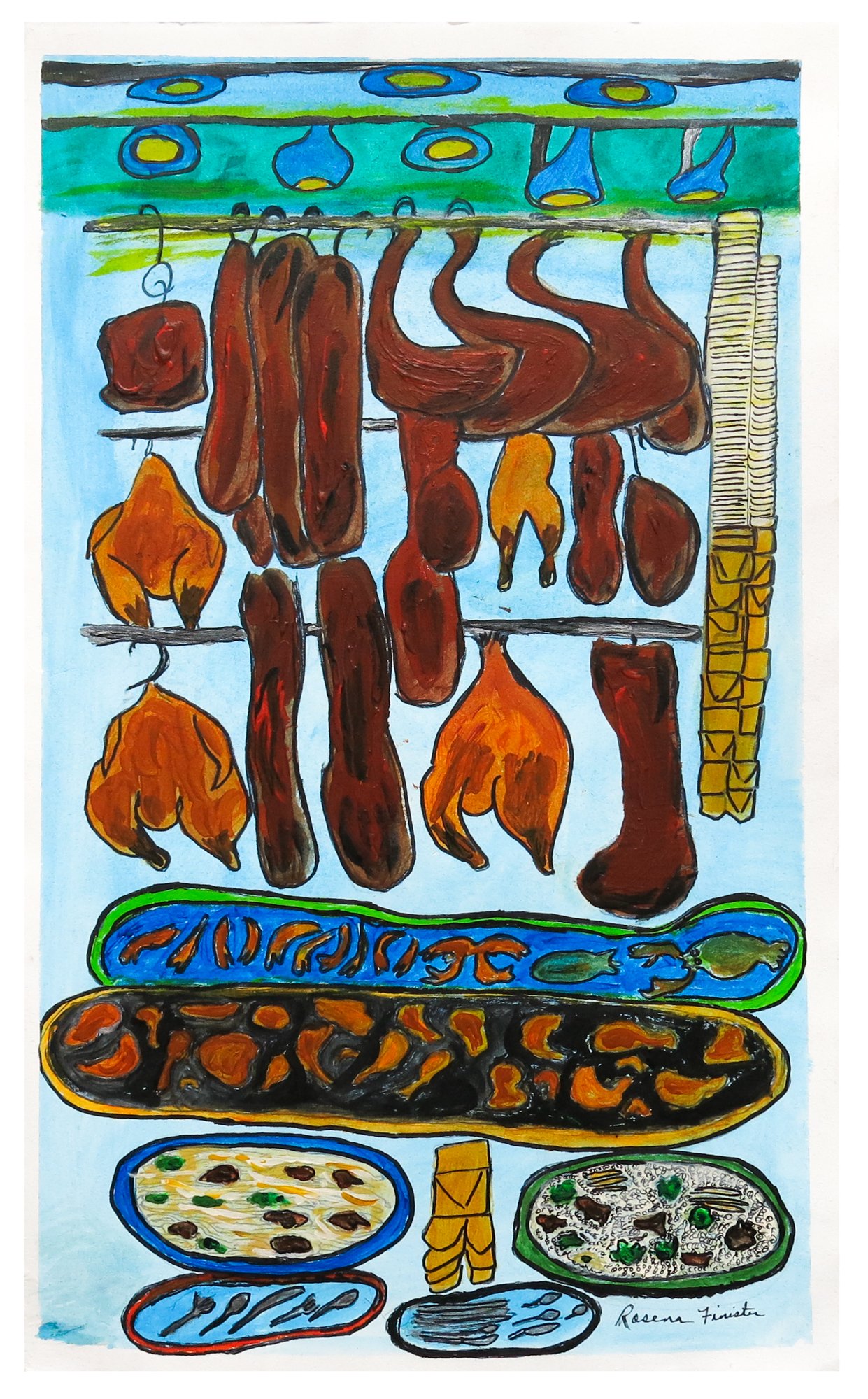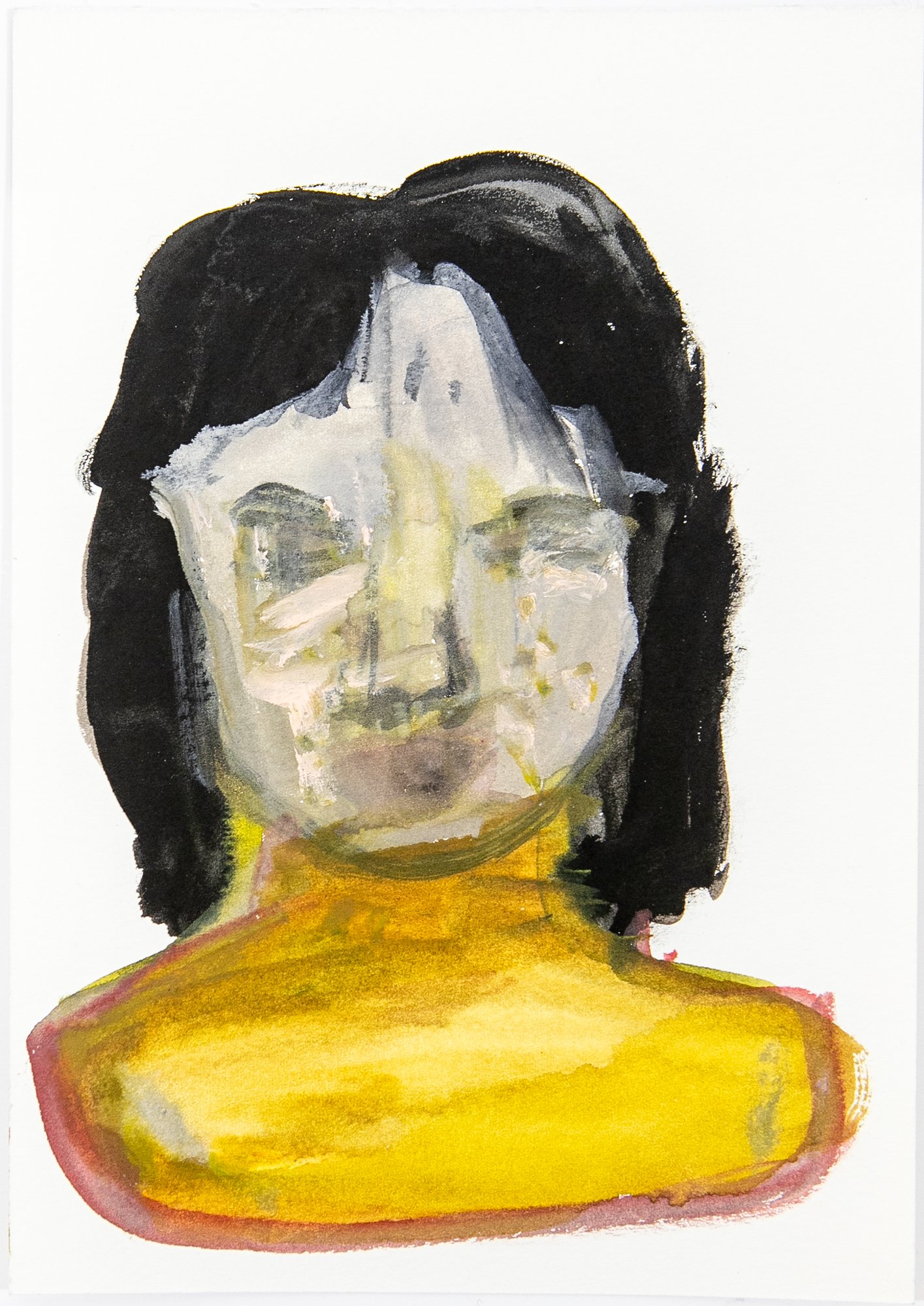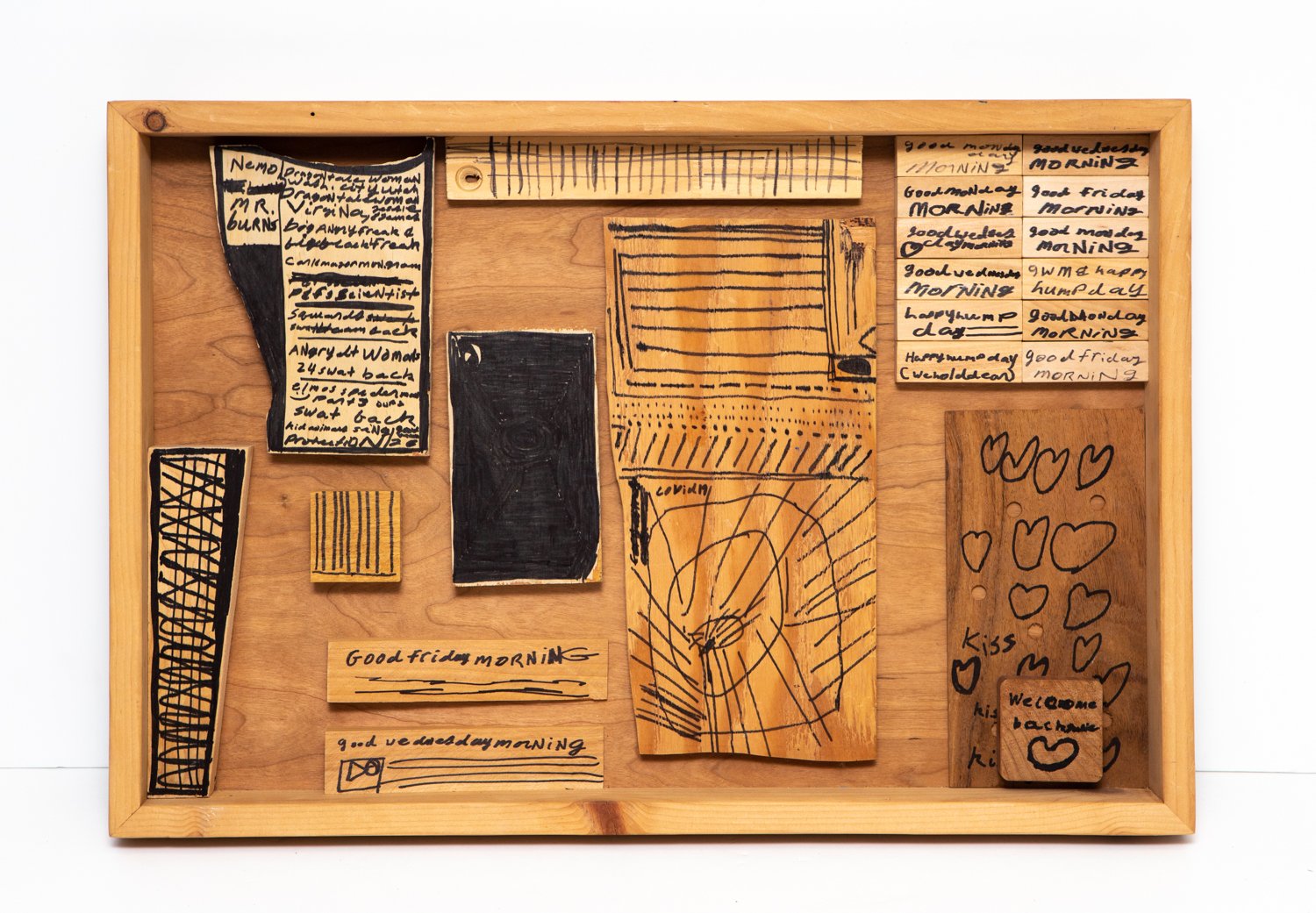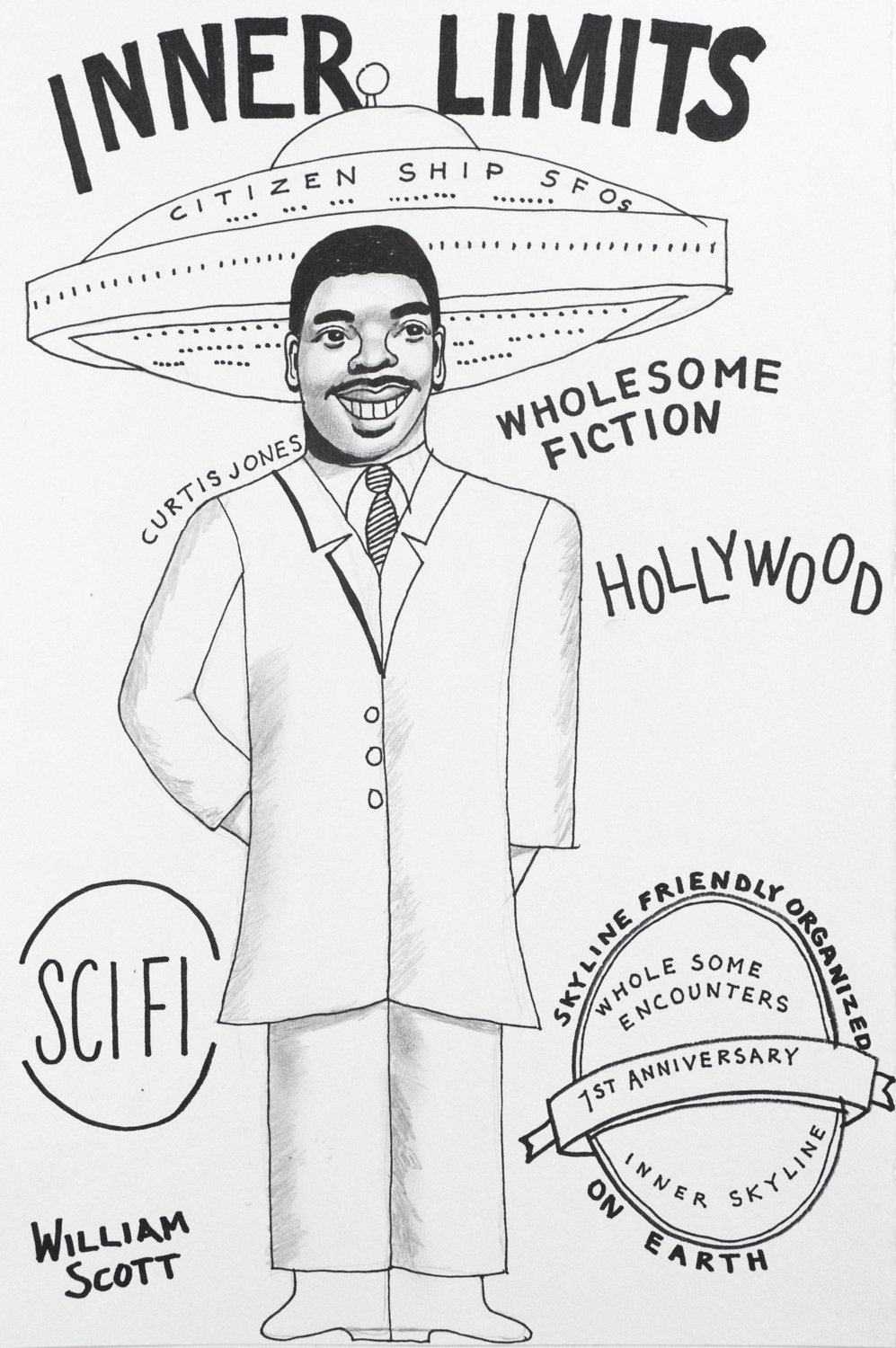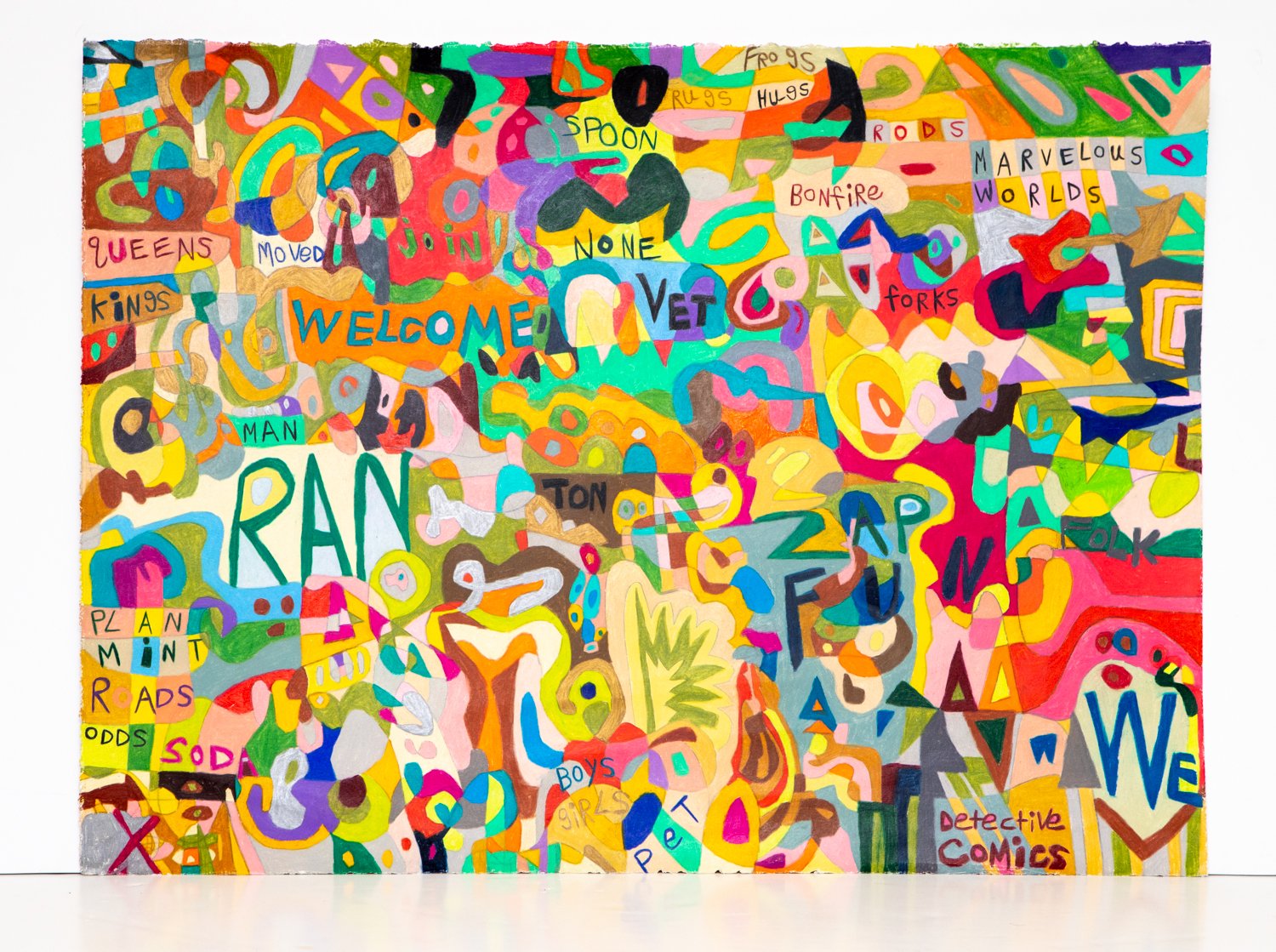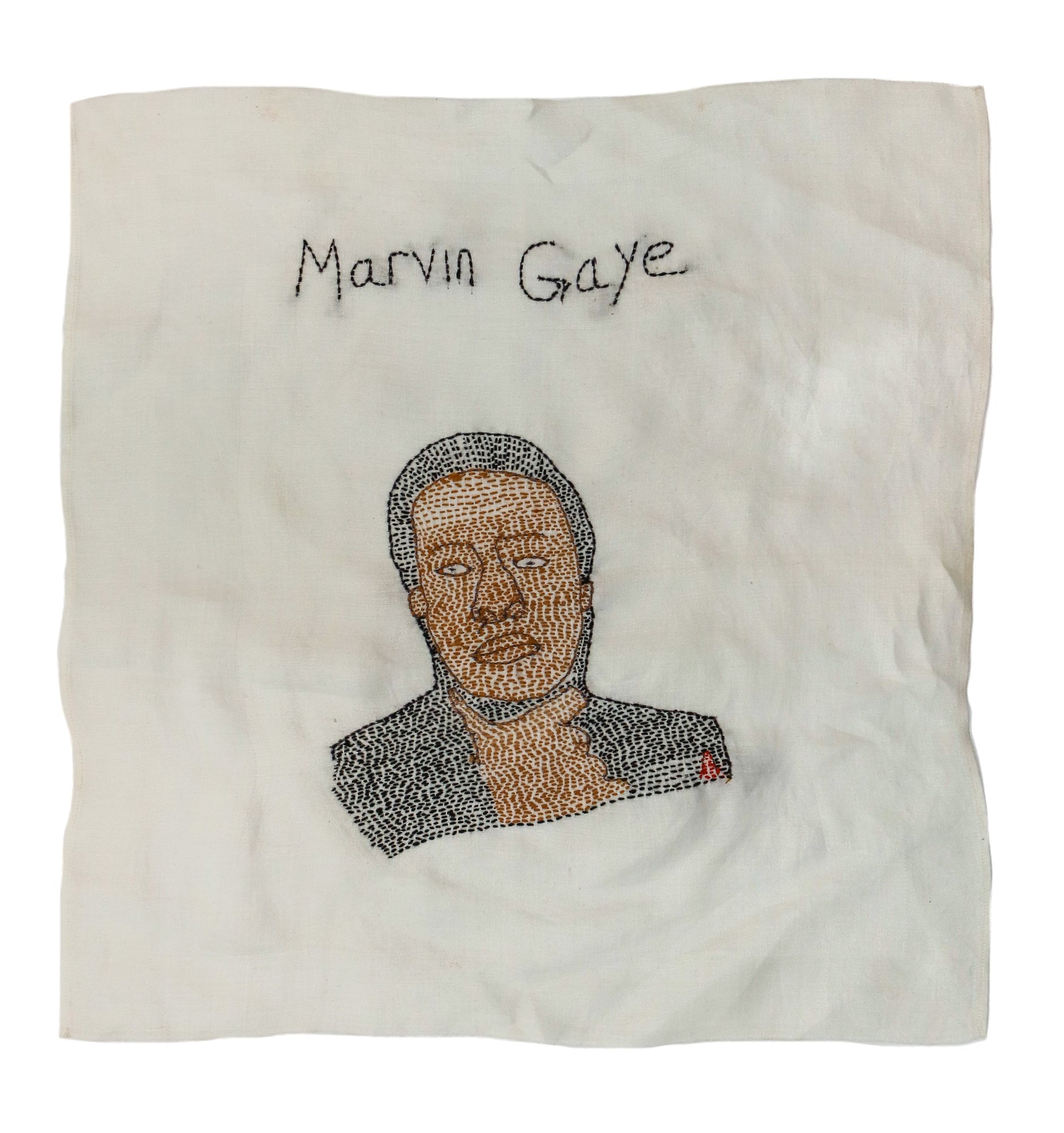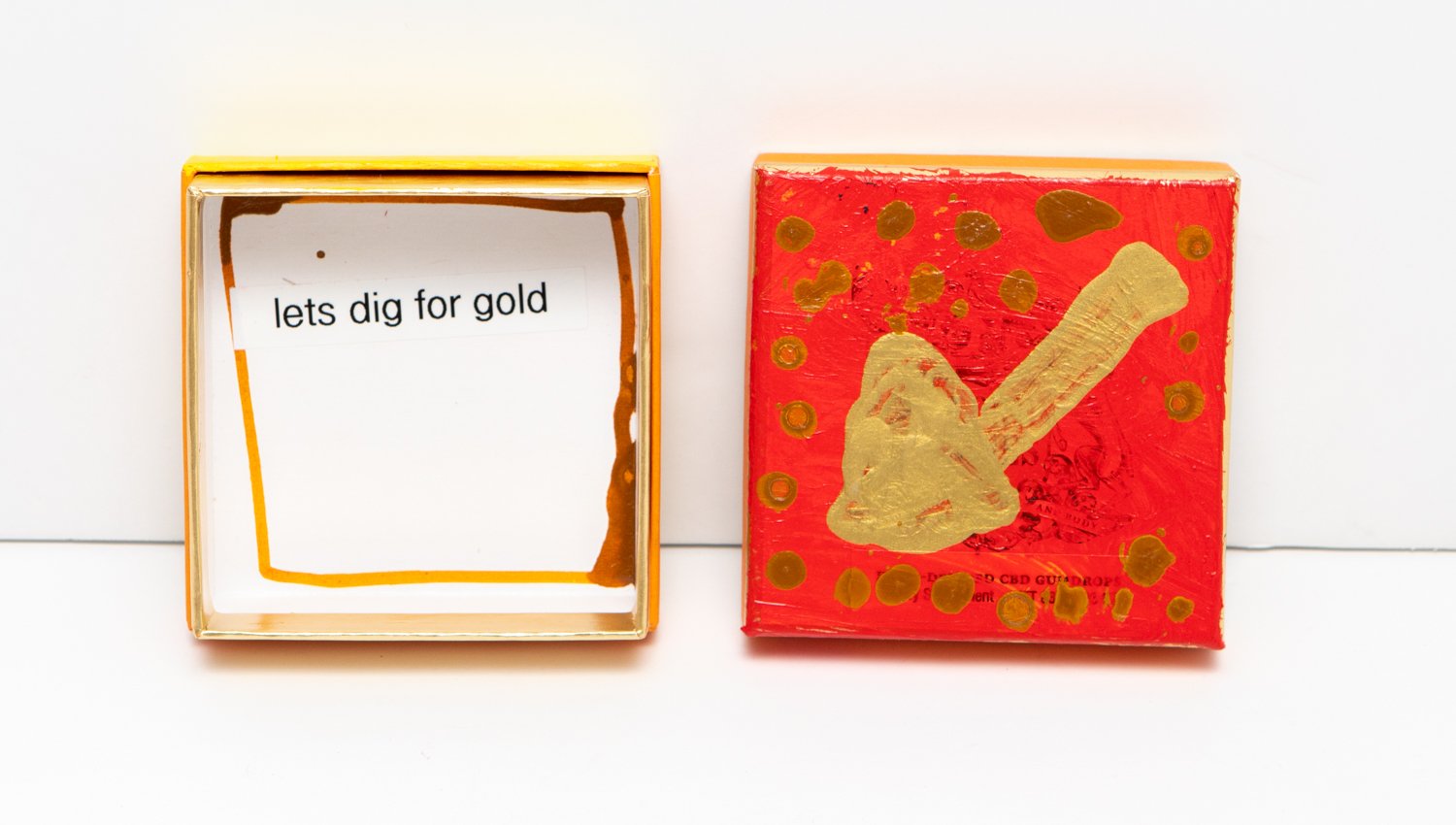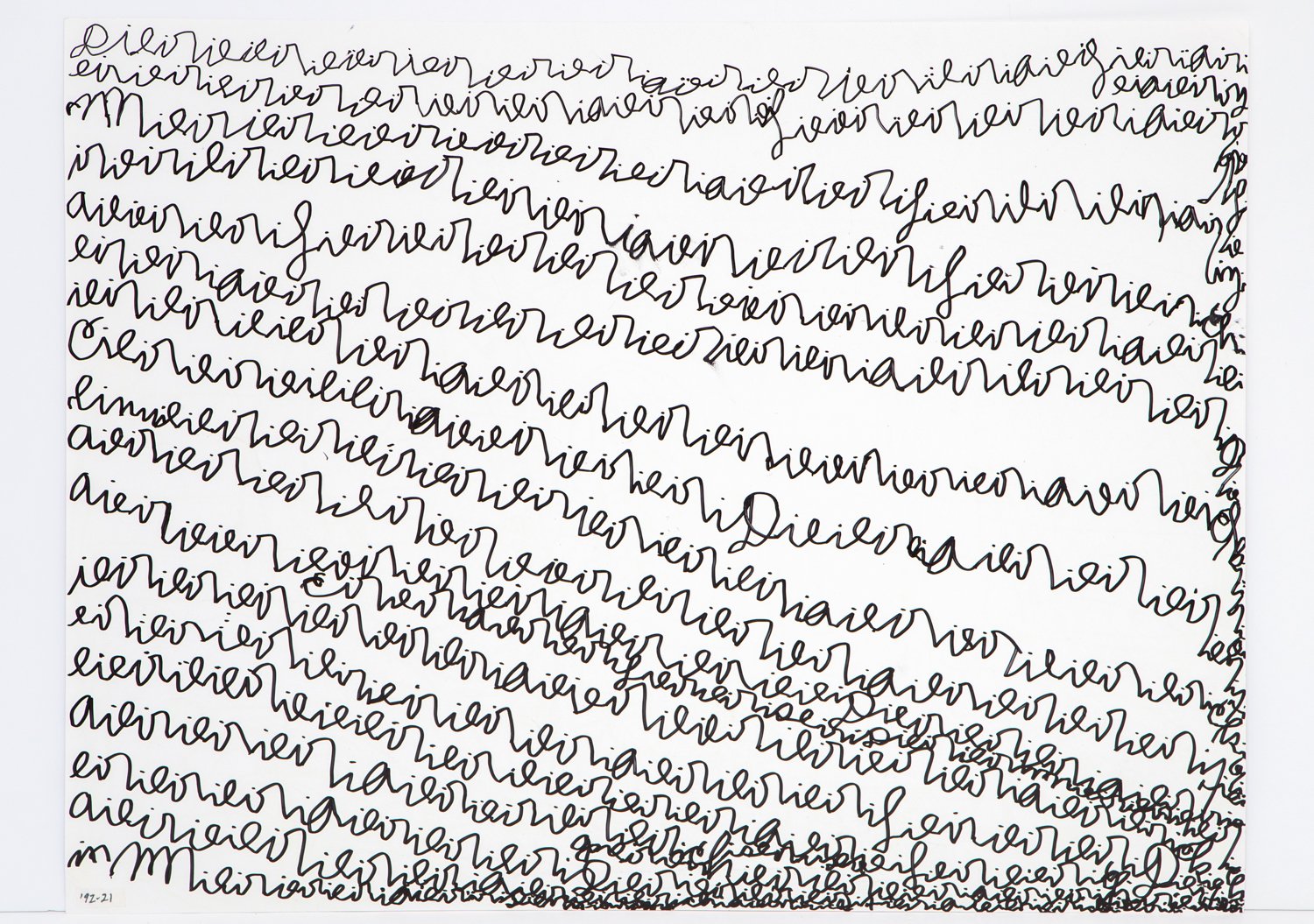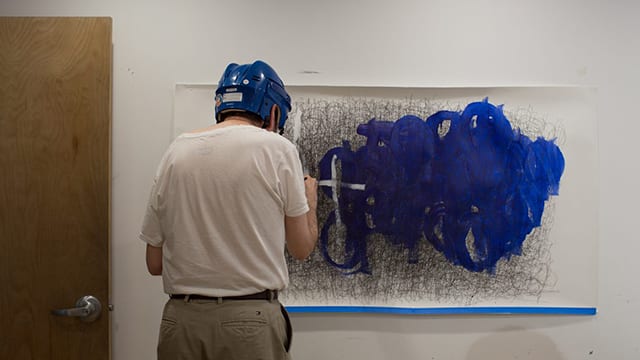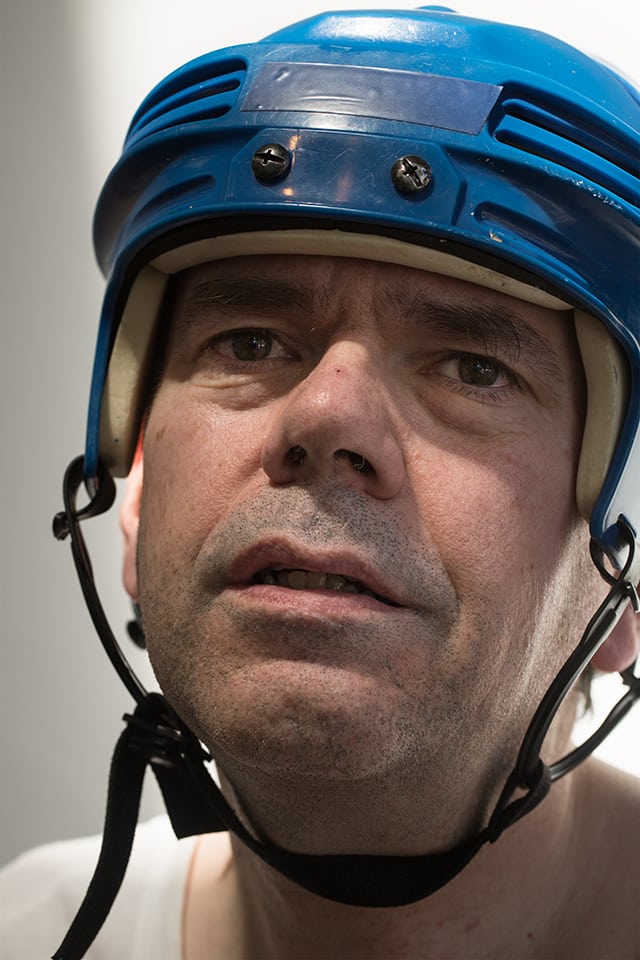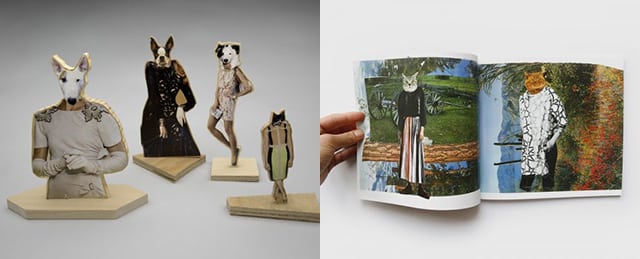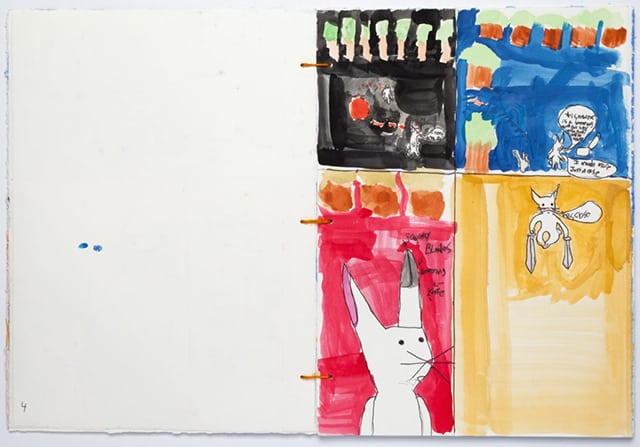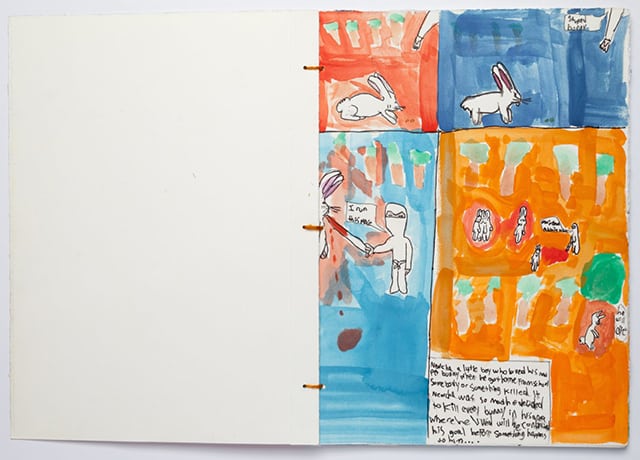On View at SFMOMA April 6–October 6, 2024
SAN FRANCISCO, CA (February 21, 2024) – 50 years ago, against a backdrop of political activism and the rising visibility of the disability rights movement, Creative Growth Art Center was founded in Oakland, California, as the first U.S. organization dedicated to supporting artists with developmental disabilities. Today, Creative Growth continues to serve as an international and national model in the field of art and disability. In honor of Creative Growth’s milestone 50th anniversary and in celebration of SFMOMA’s unprecedented partnership with the organization announced last fall, the museum will present Creative Growth: The House That Art Built. On view from April 6 through October 6, 2024, the exhibition will feature a vibrant selection of recent acquisitions from Creative Growth artists. SFMOMA will concurrently present a major commission by Creative Growth artist William Scott as part of its free art-filled space on the museum’s second floor.
“These extraordinary artists and artworks express a limitless imagination and vision that we hope expands visitors’ understanding of the art that is being made in the Bay Area,” said Jenny Gheith, Associate Curator of Painting and Sculpture at SFMOMA. “We are thrilled to better represent work by artists from Creative Growth. This was a long time coming, given what an important role they have played in art conversations in the Bay Area, and we look forward to continuing this important work,” continued Nancy Lim, Associate Curator of Painting and Sculpture of SFMOMA.
Creative Growth was founded by Elias Katz and Florence Ludins-Katz and has grown to serve more than 140 artists each week in its studios and present artists’ work in galleries and exhibition venues around the globe. Bay Area organizations Creativity Explored and NIAD (Nurturing Independence through Artistic Development) were also founded by the Katzes—in 1983 and 1984 respectively—and are similarly devoted to artists with developmental disabilities. After announcing acquisitions from all three organizations this fall, SFMOMA became home to one of the largest holdings of art by artists with disabilities in the world. Creative Growth: The House That Art Built celebrates the oldest of the three organizations on its landmark anniversary and unveils more than 80 recently acquired works spanning acrylic painting, oil pastel drawing, ceramics, sculpture and film, dating from 1981 to 2021. The exhibition will also include archival material, highlighting the organization’s history and ongoing impact on the arts and disability movement, and the art world more broadly.
“We are both honored and humbled to partner with Creative Growth Art Center in this historic moment and present an exhibition that displays the staggering breadth of skill, vibrancy and imagination emerging from Creative Growth artists,” said Christopher Bedford, Helen and Charles Schwab Director of SFMOMA. “This effort closely aligns with SFMOMA’s vision to engage a more diverse range of artists and audiences, and our ongoing work to make the museum more accessible. There is much work ahead and we could not be more grateful for Creative Growth for taking this monumental step with us.”
“Creative Growth extends its gratitude to SFMOMA, its staff and board for their exceptional leadership in diversifying their collection to include marginalized Bay Area artists,” said Tom di Maria, Director Emeritus at Creative Growth Art Center. “By amplifying the artistic voices of individuals with developmental disabilities, this collaboration breaks down barriers within an often-overlooked community and offers an exciting opportunity for museum visitors to experience these visually captivating and deeply personal works.”
CREATIVE GROWTH: THE HOUSE THAT ART BUILT ARTISTS
Joseph Alef (b. 1981, Berkeley, California), who has practiced at Creative Growth 2001–2008 and 2013 to the present, creates abstract paintings that burst with energy. Their rhythmic compositions are filled with an expressive vocabulary of layered marks.
Before moving to Creativity Explored in 2001, Camille Holvoet (b. 1952, San Francisco) practiced at Creative Growth from 1988 to 2001. Holvoet creates psychologically rich drawings reflecting her memories, fascinations and daily life, exploring subjects ranging from the prescribed medicine she takes to her disorienting move to a new home.
A Creative Growth artist since 2003, Susan Janow (b. 1980, San Francisco, California) creates work across a range of media, including drawing, ceramics and video. Her best-known work, Questions (2018), is a 10-minute single-channel video that shifts between standard interview-like questions and personal inquiries.
Dwight Mackintosh (b. Hayward, California, 1906–1999) was 72 years old when he began working at Creative Growth in 1979. Over his 20 years at the organization, he developed a singular style of looped, radiating figures that blur the boundaries between internal and external body structures, inspired in part by his experiences with X-rays and a tonsillectomy at age 12. Other subjects include buses, musical instruments, self-portraits and an invented text that he transformed into flowing graphic imagery.
John Martin (b. 1963, Marks, Mississippi) has practiced at Creative Growth since 1986. Using vividly colored drawings, ceramics and woodwork, Martin combines memories of his childhood on a farm in Mississippi with his present life in Oakland.
Featured in the 2017 Venice Biennale, Dan Miller (b. 1961, Castro Valley, California) is one of Creative Growth’s most widely known artists. A Creative Growth artist since 1992, Miller works ambidextrously, using both hands to create densely layered paintings and works on paper. Words, numbers and punctuation populate the compositions, along with building materials and electrical objects. His clusters of drawn or typed words skate fluidly between elements to see and elements to read.
Donald Mitchell (b. 1951, San Francisco, California) Donald Mitchell’s drawings and sculptures explore the human figure, which he portrays as block-like bodies in dense crowds. His compositions often feature smears of color, while others are rendered in black and white, with a starkness that suggests anonymity and an air of loneliness. He has been a Creative Growth artist since 1986.
Judith Scott (b. 1943, Columbus, Ohio; died 2005, Dutch Flat, California) was an internationally known Creative Growth artist. Her work was featured in a retrospective organized by the Brooklyn Museum in 2014 and included in the 2017 Venice Biennale. Scott started working at Creative Growth when she was 43 years old and created art there for the next 18 years, until her death in 2005. Her intricate, layered sculptures use yarn, twine and strips of fabric to wrap and knot around an array of mundane everyday objects.
William Scott (b. 1964, San Francisco, California) has worked at Creative Growth for over 30 years and his work was previously acquired by SFMOMA in 2017. Scott’s portraits feature personal heroes, celebrities, politicians and church and family members. He often depicts them as alternate or future versions of themselves. Scott also re-creates the San Francisco cityscape in drawings and paintings that are meticulous and map-like, yet still engage in fantasy, for instance through characters like Godzilla or UFOs boarded by citizens of “Praise Frisco,” Scott’s name for his hopeful, gospel-filled vision of a future San Francisco.
Ron Veasey (b. 1957, Las Vegas, Nevada) Ron Veasey’s brilliantly colored portraits are inspired by a wide range of source material, including fashion magazines, photography books and National Geographic. Veasey isolates figures on the page, outlining them in black marker and filling the flattened forms with bold colors and patterns. By capturing subtle details, direct gazes and strong poses, Veasey highlights confident and intense personas that he has honed over more than forty years at Creative Growth.
Alice Wong (b. 1980, Hong Kong) For the past decade, Alice Wong has used vintage photographic portraits donated to Creative Growth as the foundation for her paintings. She obscures the forms and faces with acrylic markers and enamel to reimagine them in bright, artificial colors. In revitalizing decades-old imagery of anonymous people, she renews their relevance in ways that are both disorienting and humorous. Wong has worked at Creative Growth since 2003.
WILLIAM SCOTT COMMISSION
On the occasion of Creative Growth’s 50th anniversary, SFMOMA will also present a major commission by Creative Growth artist William Scott. On view from April 6 through October 6, 2024, the commission is part of the museum’s ongoing Bay Area Walls initiative, a series of site-responsive wall projects by local artists that actively engage with pressing issues of our time. Scott’s largest painting to date, the expansive commission merges two of his abiding interests: map-like renderings of San Francisco and portraits of the people who populate his life and dreams. Scott and his mother, for example, appear as youthful versions of themselves, smiling alongside members of their church and the musician Diana Ross. The background of the painting reveals the Alice Griffith public housing development near the city’s Bayview-Hunters Point neighborhood, where the artist was raised. Scott’s realism expresses hopefulness and fantasy, culminating in a monumental celebration of “Praise Frisco,” his name for the new San Francisco he envisions for the future. The commission will be on view in the entryway to SFMOMA’s second floor galleries, located within the museum’s free art-filled public space.
EVENTS, PROGRAMS AND PRODUCTS
SFMOMA will host a series of events as part of its partnership with Creative Growth starting with an opening celebration on April 4, 2024, featuring the Gary Brown Trio and a DJ set by Creative Growth staff person, Amy Berumen. The fifth annual Creating Community symposium will take place on Thursday, May 23, 2024, and the 50th Anniversary Gala and Beyond Trend Fashion Show will be presented in September 2024, featuring fashion designs created and modeled by Creative Growth artists.
Coinciding with the opening of Creative Growth: The House That Art Built, the museum will debut a new space on its second floor dedicated to visitor participation. Interpretive displays, comfortable seating and opportunities to respond to the artwork will engage a wide range of visitors with different learning and communication styles and needs. The new space, entitled Art in Your Life, aims to foster human connection, deeper meaning-making and increased accessibility.
Lastly, SFMOMA’s Museum Store will collaborate with Creative Growth as well as peer organizations Creativity Explored and NIAD to offer exclusive merchandise featuring artist designs and ranging from clothing to books, prints, patches and pins. A portion of proceeds from every sale will benefit each organization and its artists.
ORGANIZATION
Creative Growth: The House That Art Built is organized by SFMOMA and co-curated by Jenny Gheith, SFMOMA Associate Curator of Painting and Sculpture, and Nancy Lim, SFMOMA Associate Curator of Painting and Sculpture; with Auriel Garza, SFMOMA Curatorial Assistant.
SUPPORT
Lead support for Creative Growth: The House That Art Built is provided by Randi and Bob Fisher, and Diana Nelson and John Atwater. Major support is provided by Mary Jo and Dick Kovacevich. Significant support is provided by Mary Jane Elmore. Meaningful support is provided by Marty and Rebecca Eisenberg, Maryellen and Frank Herringer, and Alison Pincus.
Praise Frisco: Peace and Love in the City was commissioned and executed by William Scott as a part of Bay Area Walls, a series of commissions initiated in 2020. Major support is provided by the Roberta and Steve Denning Commissioning Endowed Fund. Significant support is provided by the Diana Nelson and John Atwater Commissioning Fund. Meaningful support is provided by the Patricia W. Fitzpatrick Commissioning Endowed Fund and the Denise Littlefield Sobel Commissioning Endowed Fund.
San Francisco Museum of Modern Art
151 Third Street
San Francisco, CA 94103
The San Francisco Museum of Modern Art is one of the largest museums of modern and contemporary art in the United States and a thriving cultural center for the Bay Area. Our remarkable collection of painting, sculpture, photography, architecture, design and media arts is housed in a LEED Gold-certified building designed by the global architects Snøhetta and Mario Botta. In addition to our seven gallery floors, SFMOMA now offers over 45,000 square feet of free, art-filled public space open to all.
Visit sfmoma.org or call 415.357.4000 for more information.
Follow us on X for updates and announcements: @SFMOMA_Press
About Creative Growth
Creative Growth is a non-profit organization based in Oakland, California that advances the inclusion of artists with developmental disabilities in contemporary art and strengthens community by providing a supportive studio environment and gallery representation. Founded in 1974, Creative Growth is a leader in the field of arts and disabilities, establishing a model for a creative community guided by the principle that art is fundamental to human expression and that all people are entitled to its tools of communication.

